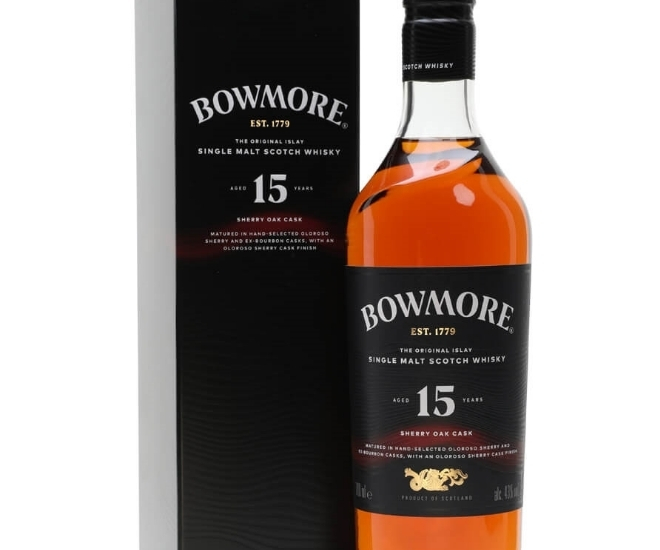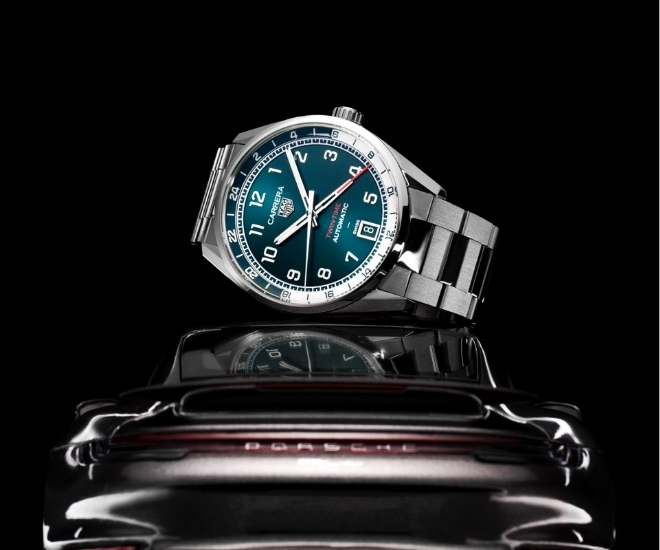
In the pantheon of chronographs, few names carry the gravitas, functionality, and cultural longevity of the TAG Heuer Carrera. Since its inception in 1963, this watch has been a reflection not just of time but of speed, ambition, and clarity. Designed by Jack Heuer with the motor racer in mind, the Carrera has stood as a touchstone of purpose-driven horology. From Sebring to Monaco, from pit lanes to boardrooms, TAG Heuer has timed legends, defined eras, and continues to evolve with technical poise. While the brand has many options for racing enthusiasts, it all began with the chronograph and the Carrera.
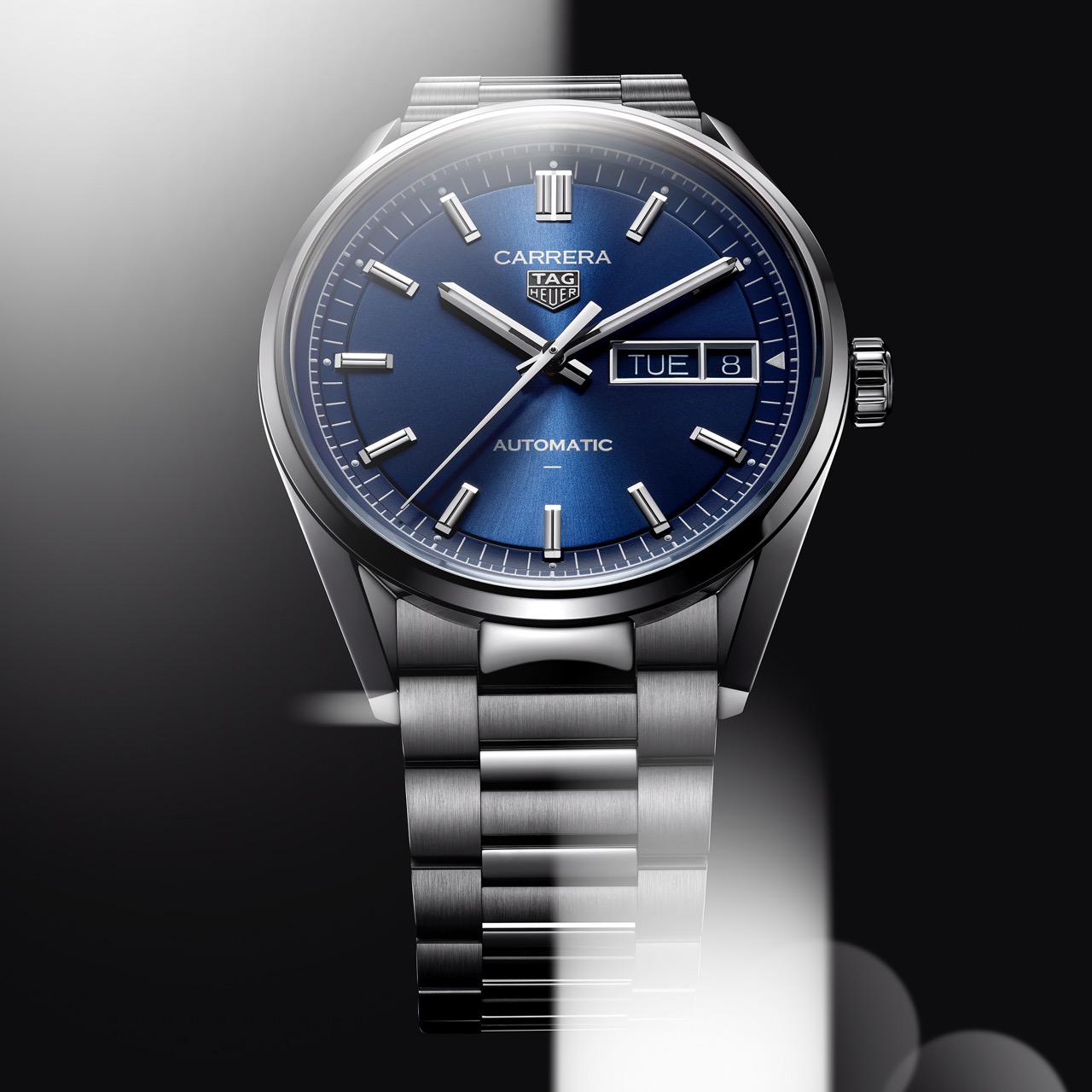
In 2025, as TAG Heuer reclaims its role as Official Timekeeper of Formula 1 and unveils a spate of new releases under its new adage, “Designed to Win,” the Carrera has, once again, reaffirmed its relevance. This is not merely a nostalgic watchmaker looking back; this is a storied institution deeply rooted in legacy, accelerating toward the future with one of its most iconic creations leading the charge.
And thus, we also note, from our perspective, that this magazine has been writing up TAG Heuer’s exploits in the world of motor sports for years. Both the writer of this story and the editor have been around this track more than a few times. Indeed, an entire generation has grown up with the idea that TAG Heuer is the timekeeper of record for motorsports. Now, a new generation will share the experience. Familiarity only ups the ante on our passion to learn more about the racing heritage behind everything from the Carrera and the Monaco to the Formula 1 and Link, discover different perspectives on the motorsports-driven models of various types, and perhaps make our mark on the future.
Before we proceed to the start-finish line, we must stay in the pit lane to address a couple of housekeeping matters. First, this story concerns multiple TAG Heuer collections, even though the cover showcases two Carrera Day-Date models. The others are the Carrera Twin Time and the Formula 1 Solargraph and Chronograph. Details on these watches are included in sidebars to the main story. As usual, the cover specifications and details are in the Cover Watch story. Secondly, and finally, this cover story winds its way through TAG Heuer’s racing pedigree across many decades. That means it is Carrera- and chronograph-heavy, and starts from the Heuer era. In fact, it starts even before the Carrera…
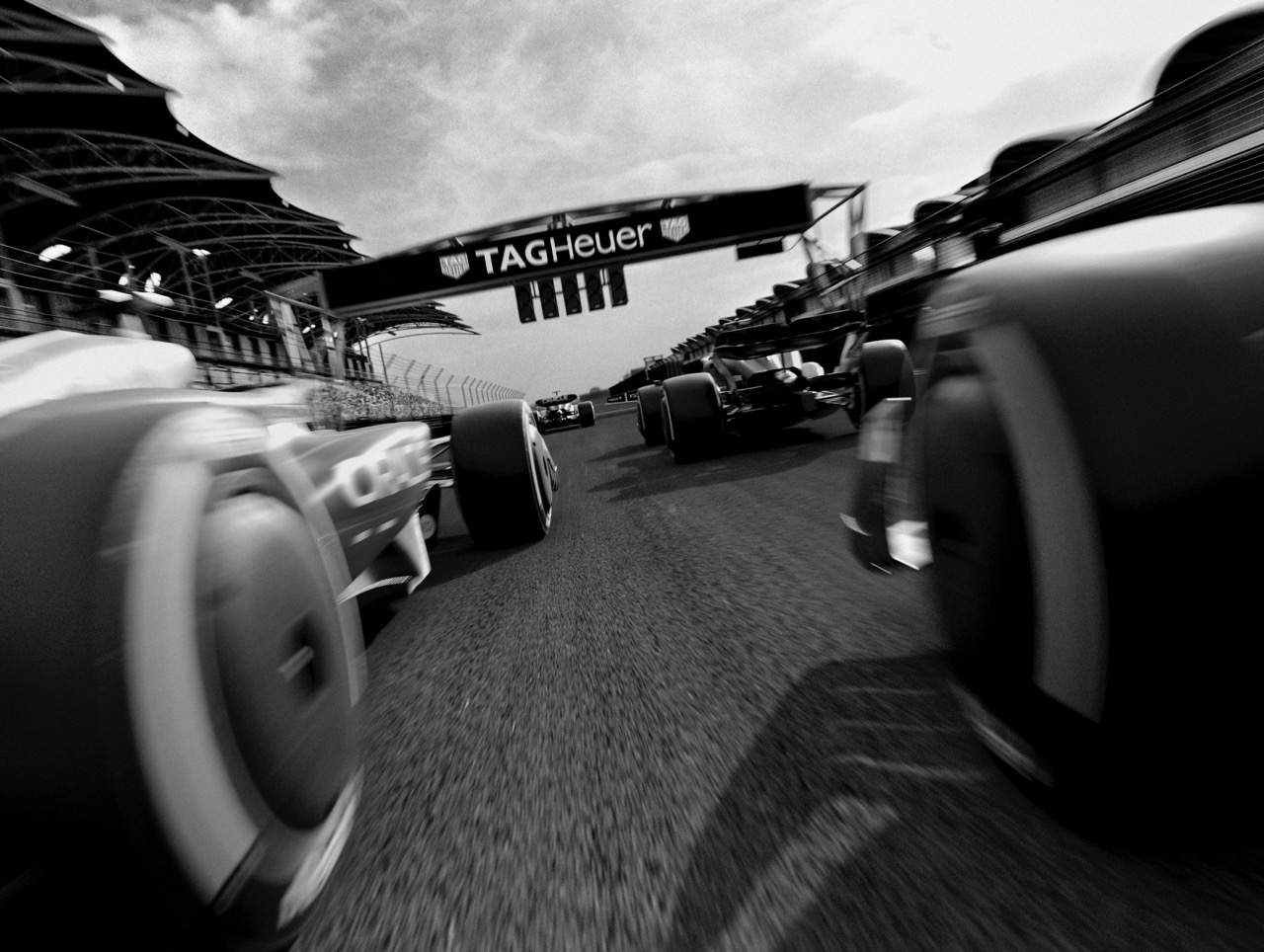
Race, Career, Road
To understand the Carrera, we must begin with its creator; in this story, the devil is in the details. Jack Heuer, the great-grandson of Heur founder Édouard Heuer, was born on November 19, 1932, in Bern, Switzerland. A multilinguist, skier, and design enthusiast, Jack would become the visionary leader who brought the family firm into the 21st century
In his autobiography The Times of My Life, Jack recalls how exposure to modernist furniture and architecture, particularly the works of designers such as Le Corbusier and Charles Eames, and architects such as Eero Saarinen and Oscar Niemeyer, shaped his aesthetic sensibilities. Jack writes that as a student, he even saved enough to buy himself an Eames lounge chair, which he admits, looked somewhat out of place in amongst his modest student accommodation.
Jack joined the family company in 1958, bringing with him not only a passion for innovation but also a refined appreciation for what contemporary design could contribute to horology. That spirit would manifest most powerfully in 1962, when Jack attended the 12 Hours of Sebring and first encountered the name “Carrera Panamericana,” an infamously dangerous road race across Mexico.
“For Jack Heuer, Carrera Became a Rosetta Stone For What a New Generation Chronograph Could Be”
In The Times of My Life, Jack recounts that while soaking in the gasoline-laden atmosphere at Sebring, he gravitated toward the Ferrari pits. He spent so much time there that he became well-acquainted with the team’s young drivers, the Rodríguez brothers, and even their parents. During a conversation with them, Jack recalls: “They told me that they were lucky that their boys were so young — Pedro was then 21 and Ricardo 19 — because if they had been born a few years earlier, they would certainly have participated in the dangerous race across Mexico known as the Carrera Panamericana. At the time, it was considered to be the most dangerous sports car race in the world and over a period of five years had claimed over 30 victims. It was called off in 1955 because of safety concerns, a decision no doubt reinforced by the disaster at Le Mans the same year.”
It was in that moment that the word Carrera, Spanish for “race,” “career,” and “road,” struck Jack with uncommon resonance. For him, the word and the meaning it bore became a Rosetta Stone for what a new generation chronograph could be. Upon returning to Switzerland, he wasted no time in registering the name. And the rest, as they say, is history.
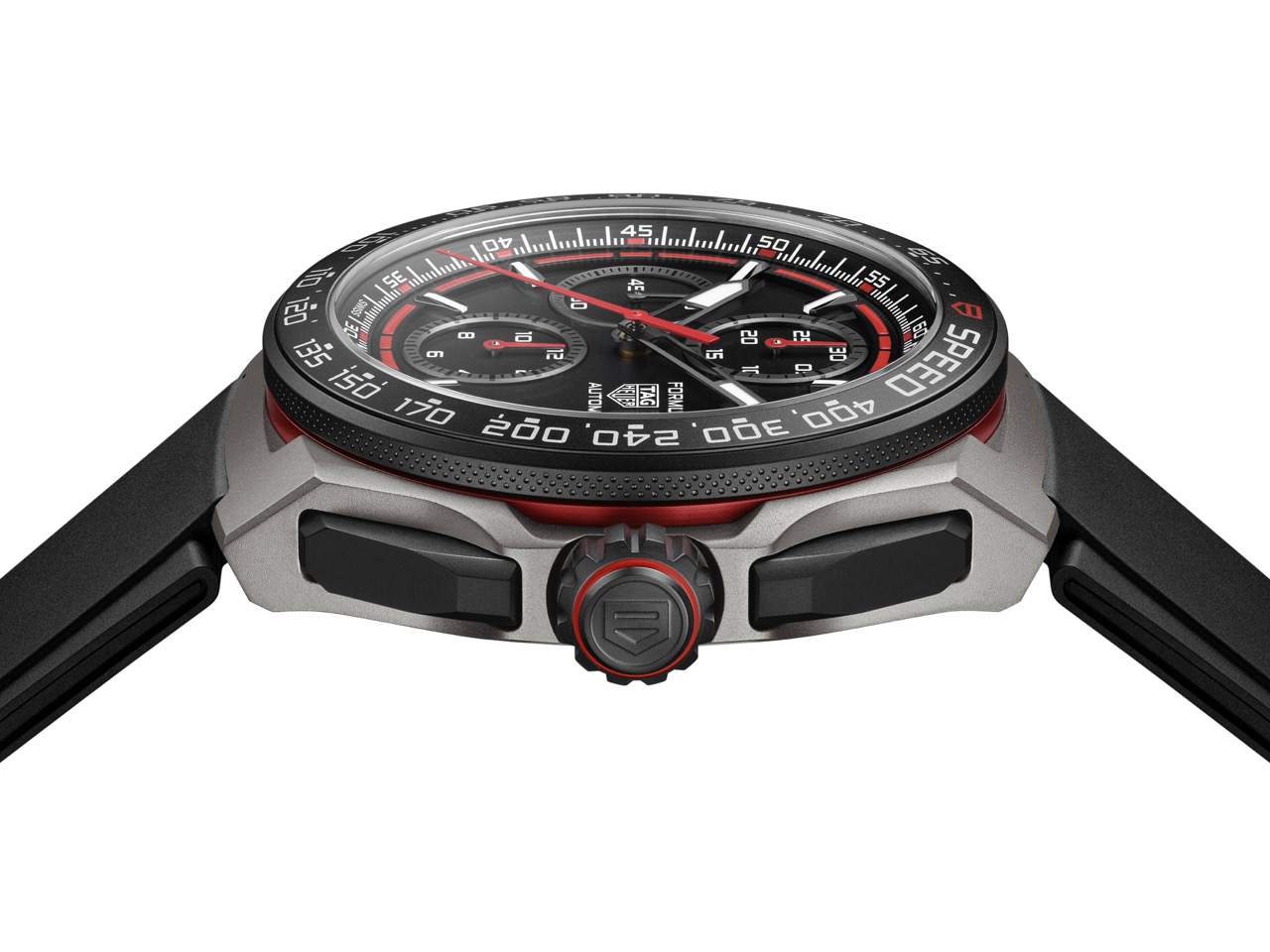
Design With A Destination
Jack introduced the first Heuer Carrera in 1963, the reference 2447, and it was nothing short of revolutionary. Jack brought his modernist sensibilities to the design process, striving for a chronograph that emphasized clarity, legibility, and mechanical sophistication. The watch’s most important innovation was the use of a steel tension ring inside the crystal, which allowed the minute scale to be placed around the dial’s periphery without cluttering the primary surface. This created an expansive and easily readable layout. The dial was stripped of superfluous text, displaying only the Carrera name and the Heuer shield, while the hands and hour markers were designed with sharp, functional lines. The case, at 36mm, was considered large at the time, and inside ticked the workhorse Valjoux 72 manual-wind chronograph movement.
Heuer had been in Formula 1 proper since 1950, with records showing the brand’s chronographs (manual-winders) in use by the likes of Ferrari, Lotus, Lancia and Maserati
Jack writes in his autobiography, “I wanted a dial that had a clear, clean design, and a new technical invention came to my aid.” He goes on, “A manufacturer of plastic watch crystals had invented a steel tension ring that fitted inside the crystal and kept it under tension against the surrounding steel case, thereby greatly increasing the degree of water resistance. I decided to use the inside bevel of this tension ring to carry the markings measuring one-fifths of a second. In other words, the flat dial surface no longer had to carry these markings — they had now been shifted off onto the tension ring — and this was the secret behind the fresh, clean, and uncluttered appearance of my first ‘Carrera.’”
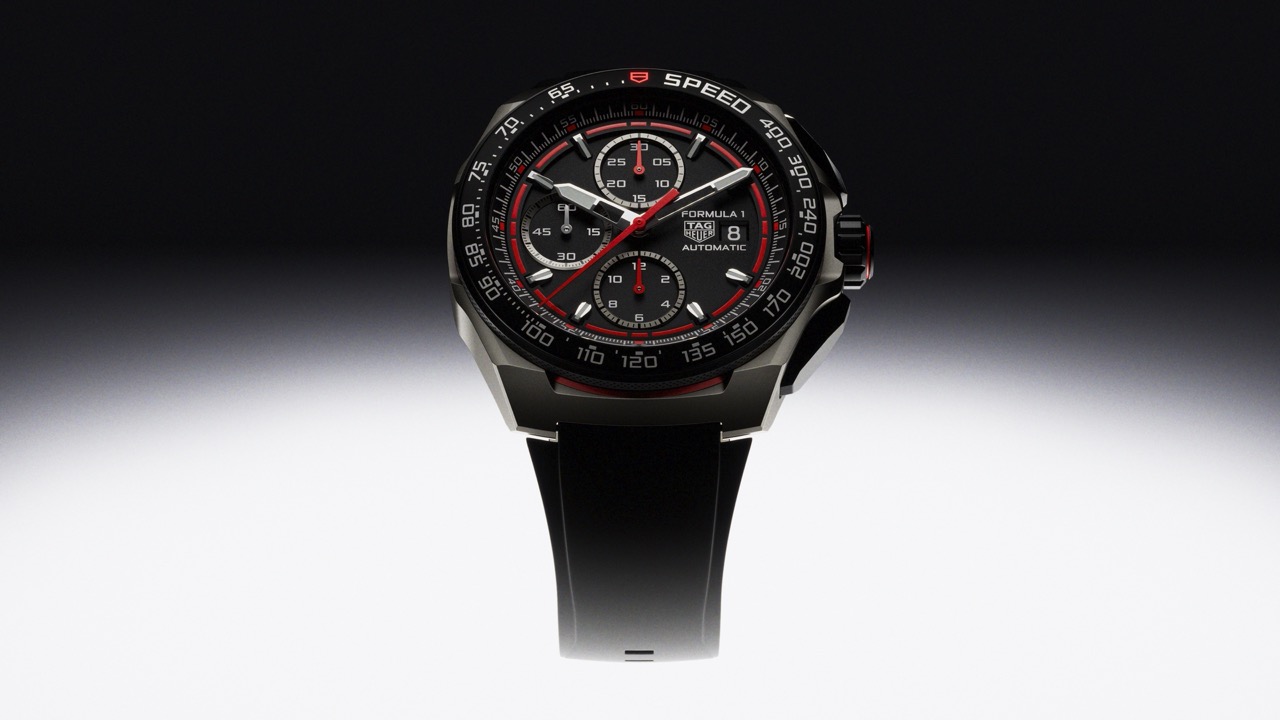
The Carrera was instantly adopted by motorsport professionals who valued its readability during the rigors of racing. It set a benchmark not just for driving watches, but for present chronograph design overall. By 1965, the Carrera line had already begun to evolve. That year saw the launch of the Carrera Date (ref. 3147), nicknamed the “Dato,” which added a date window to the chronograph layout. The initial placement at 12 o’clock was quickly revised in 1967 to a more legible 9 o’clock position. This layout, which removed the running seconds subdial and emphasized symmetry, became a collector favourite and is often referred to as the “Cyclops” for its lone eye-like aperture.
The 1970s brought further experimentation. Barrel-shaped cases, bold dial colours, and a transition to automatic chronograph movements like the Calibre 11, all of which marked a more adventurous era. The Carrera adapted, embracing the aesthetic exuberance of the decade while maintaining its functional core. Yet the Swiss watch industry was entering troubled waters.
As the advent of quartz movements dented the industry badly in the 1970s, many traditional brands struggled to adapt. Heuer faced considerable financial pressure itself. It was not until 1985, when the company merged with Techniques d’Avant Garde (TAG) Group to become TAG Heuer, that the brand really began its next chapter. The merger introduced a renewed emphasis on motorsport alignment and technological reinvention.
“Few Watchmakers Can Lay Claim To Such Deep Roots In Motorsports As TAG Heuer”
Fast forward to the 21st century, and the Carrera’s legacy remains robust. Collectors and aficionados eagerly anticipated a return to the collection’s roots — a Carrera that honoured Jack’s original vision while incorporating present-day advancements. This was realized in multiple limited editions, such as the 2017 Skipper co-created with Hodinkee and the Blue Dreamer with The Rake and Revolution. The 2020 Carrera 160 Years Silver reissue marked a major milestone, bringing the iconic 2447 design to a new generation with state-of-the-art manufacturing and vision. These watches reaffirmed the timeless appeal of the Carrera and TAG Heuer’s respect for its heritage.
The momentum built toward a major celebration in 2023: the 60th anniversary of the Carrera. To mark the occasion, TAG Heuer released the Carrera Chronograph “Glassbox,” a 39mm watch with a box- shaped sapphire crystal, a dramatically sloped flange, and a dial that paid faithful homage to the 2447. The new TH20-00 movement inside was a technical upgrade of the earlier Heuer 02, enhanced under the leadership of TAG Heuer’s Movement Director — and industry legend — Carole Forestier-Kasapi. The TH20-00 introduced a quieter, more efficient bi-directional winding rotor and a five-year warranty, a first for TAG Heuer mechanical chronographs. Says Forestier-Kasapi, “To go from two to five years of warranty, the mechanics behind the watch have to keep up. This is a major challenge for any watchmaker.” She adds, “TH20-00 represents a leap in quality and durability. All TAG Heuer movements will now have to meet this new benchmark of excellence.”
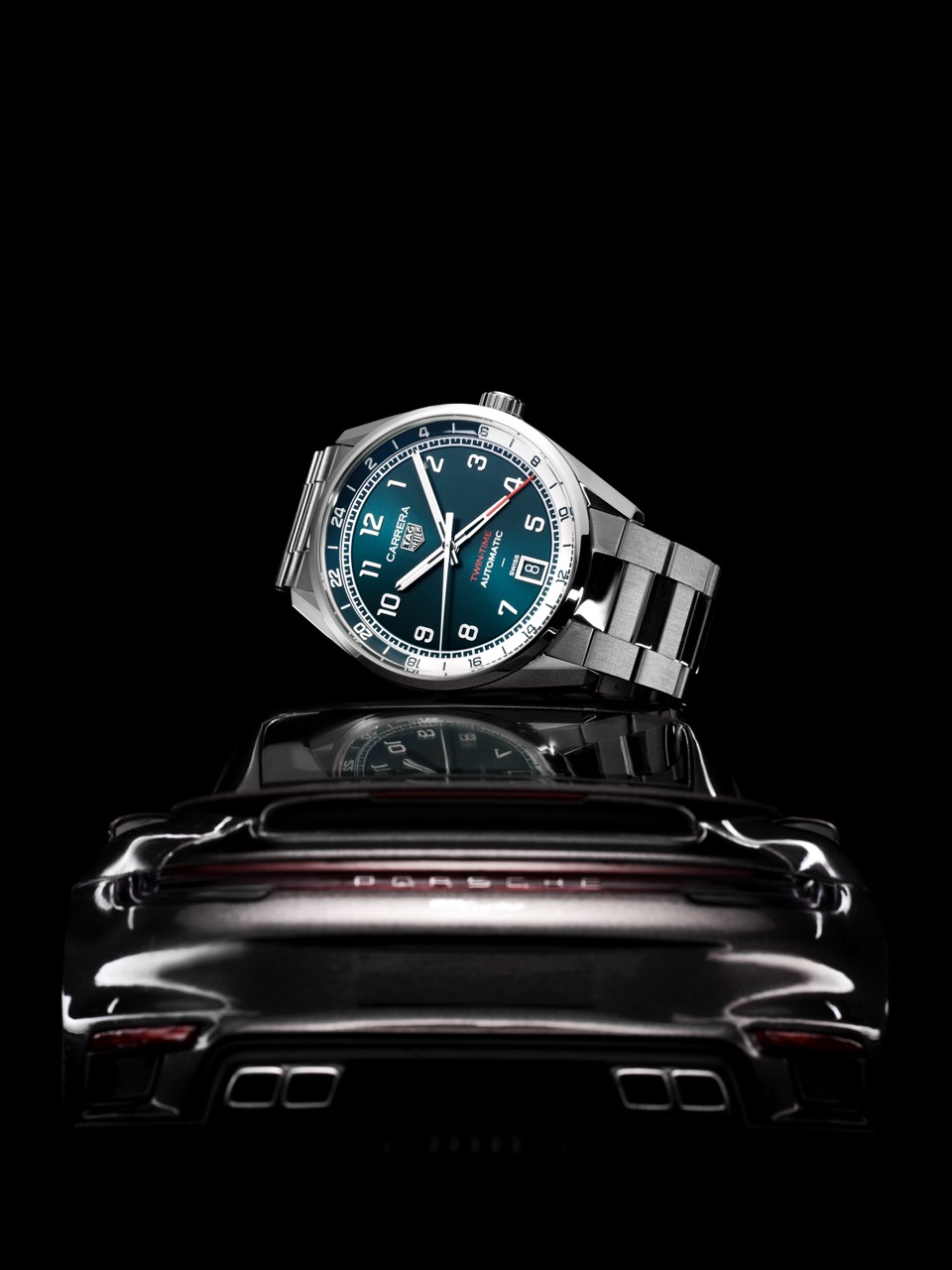
Carrera Day-Date & Twin-Time
TAG Heuer’s 2025 Carrera lineup celebrates more than its racing pedigree, it also refines everyday utility with two elegant, mechanically driven timepieces: the Carrera Day-Date and the Carrera Date Twin-Time (opposite page).
Both models channel the spirit of the original 1963 Carrera, born from Jack’s vision of a timepiece that offered clarity, resilience, and elegance for professional drivers. Today, that same vision continues with a contemporary twist. The Day-Date and Twin-Time share a design language rooted in the brand’s racing DNA but updated with Glassbox-inspired case geometry, a redesigned bezel for improved ergonomics, and reimagined three-dimensional dials that offer greater depth and legibility. These changes amplify the presence of the dial while preserving the signature Carrera clarity that has defined the collection for over six decades.
For more on the Carrera Day-Date, see the Cover Watch story, as mentioned earlier. Moving right on then, the Carrera Date Twin Time expands the collection’s utility with a GMT complication that is both practical and stylish. First introduced in 2021, the Twin-Time GMT filled a gap in the collection and reminded everyone that Heuer had a Twin-Time model in the 1950s, before Jack Heuer refocused the brand’s attention on the chronograph. In fact, the Twin-Time precedes the Carrera by eight years. This year, TAG Heuer brings some technical updates to the Twin-Time GMT.
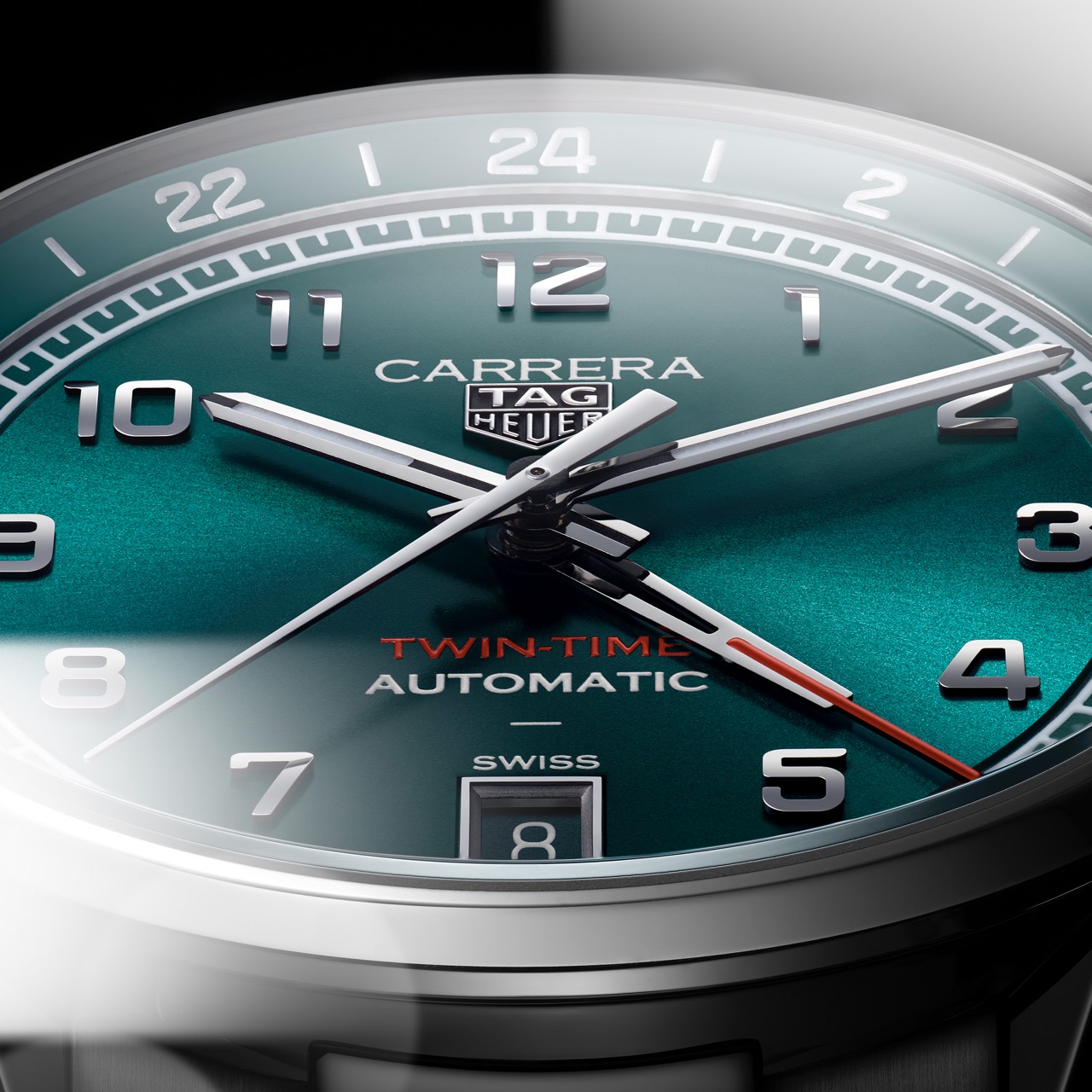
First though, let us look at the winning form of the new watch because that too is new. The teal sunray-brushed dial evokes classic racing livery, framed by a two-tone teal-and-silver 24-hour flange for immediate readability. A red-tipped GMT hand, subtly shaped to echo a watchmaker’s tweezers, sweeps across the dial, pointing to a second time zone, while Arabic numerals mark the hour scale with sharp clarity. It is an excellent expression of understated sophistication for the global traveller, offering functionality that does not compromise on elegance.
Powering the Twin-Time GMT is a proprietary movement developed with Advanced Mechanical Technology (AMT): TH31-03; AMT is the high- end arm of Sellita and you might recognise the movement designation from the Aquaracer Professional GMT. This replaces the Calibre 7 movement that was in use from 2021; Calibre 7 was based on a Sellita movement and thus the new TH31-03 movement can be viewed as an upgrade.
The automatic calibre delivers an impressive 80- hour power reserve and is backed by a five-year warranty, setting a new benchmark for reliability in the Carrera family. The refined finishings here include a shield-shaped oscillating weight, visible through a sapphire crystal caseback that also bears a Victory Wreath engraving. This is a quiet tribute to the Carrera’s motorsport origins and a symbolic charm for its wearer.
TAG Heuer has also reengineered comfort into the design. The steel H-link bracelet now includes a quick-adjust system for tool-free sizing and is paired with double folding clasps for a secure yet elegant fit. Select models are also available with leather straps, enhanced with contrasting linings that add a discreet pop of character. In its 2025 incarnation, the Carrera Twin-Time does not just celebrate the past. The new watch inherits its spirit and recasts it for a new generation. These are watches for milestones, ambition, and the moments that define a life lived with purpose.
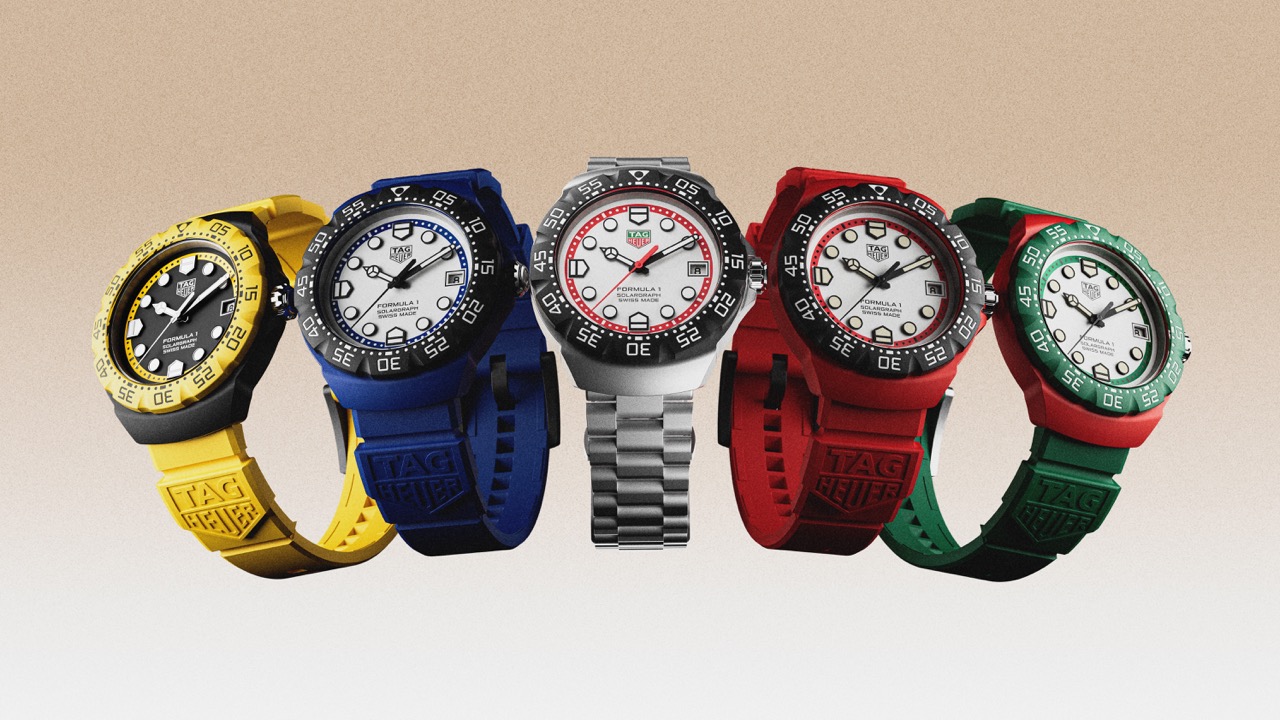
The anniversary novelties also included the Carrera Chronograph Tourbillon powered by the calibre TH20-09: a COSC-certified 4Hz tourbillon movement that combines high horology with everyday practicality. Another standout launch was the 42mm Carrera Chronosprint x Porsche; a tribute to the Porsche 911, both icons having debuted in 1963.
Enabled by the custom TH20-08 calibre, the watch recreates a key moment from the 911’s legacy: its 0 to 100 km/h sprint in 9.1 seconds. As Forestier-Kasapi explains, the chronograph function mirrors this by taking exactly 9.1 seconds to sweep across a prominently marked red zone of the dial, capturing the essence of that first exhilarating launch (the chronograph mechanism then adjusts itself to sweep through the rest of the 60-second chronograph scale at the proper rate).
TAG Heuer also honoured Jack Heuer’s iconic gold Carrera reference 1158CHN with a modern 39mm version crafted in yellow gold and powered by the TH20-00 movement. Rounding out the celebrations, the brand unveiled The TAG Heuer Carrera: The Race Never Stops — a commemorative book chronicling six decades of the Carrera’s enduring legacy.
Building on the momentum of the anniversary year, 2024 introduced even more excitement. A few notable introductions included: a green Carrera Tourbillon alongside a faithful reissue of the “Cyclops” Dato, now powered by the TH20-07 and featuring the Glassbox case. The Carrera Panda Chronograph with red detailing and a polished three-link bracelet, and a new opulent execution of the Carrera Skipper was introduced, in a 39mm rose gold case.
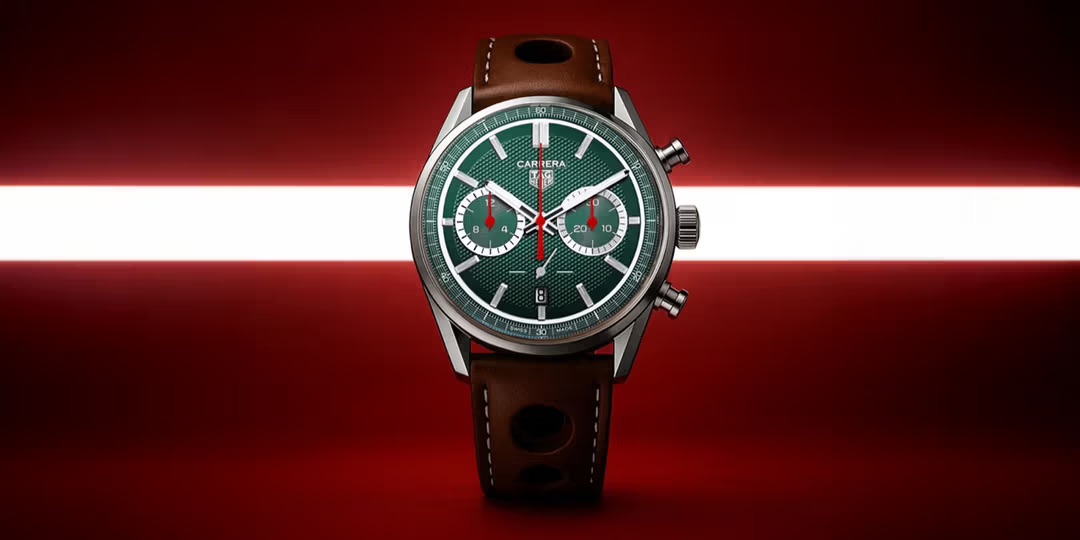
Return To The Grid
Having understood the evolution of the Carrera, it is also important that we take a moment to recall how the manufacturer maintained its relevance in the world of automotive racing, all at the same time. You see, the Carrera was not just a new watch. It was a new way of thinking about timekeeping. Within a few years of its debut, the Carrera had become a staple in the racing world.
Professional drivers, pit crews, and timekeepers praised its readability and durability. By the late 1960s, Heuer was supplying dashboard instruments to teams, and its logo appeared on Rob Walker Lotus 49B in 1969; this was the first appearance of a watch brand on a Formula 1 car, and on driver Jo Siffert’s racing suit following the end of restrictions on sponsorships in 1968. By 1971, a formal sponsorship agreement with Scuderia Ferrari was in place.
Under Jack’s leadership, Heuer’s partnership with Ferrari was more than just symbolic; it was operational. Timekeeping equipment and personnel were deployed to races, solidifying Heuer as a motorsport authority. Drivers like Niki Lauda and Clay Regazzoni wore Carreras off-track, reinforcing its identity as a driver’s tool as much as a style statement. On the tool front, Heuer contributed to Formula 1 overall with the development of the Automatic Car Identification Technology (ACIT) in the 1970s, which saw all racing cars fitted out with tiny transponders. These transponders tracked each car effortlessly and clearly, sending their signals to a receiver at the finish line. The matter of which car finished first, or in what order, could never be in dispute after this. Thus, Heuer became the first official timekeeper for Formula 1 in 1974.
This confluence of design excellence and motorsport validation created something rare: a chronograph with an authentic purpose. When the TAG Group acquired Heuer in 1985, that racing DNA became even more entrenched, and more watch models entered the fray. In 1986, TAG Heuer introduced the Formula 1 model, whose colourful cases, straps and dials shaped an entire generation of racing fans. TAG Heuer would go on to partner with McLaren, timing the likes of Ayrton Senna, and would be named the Official Timekeeper of Formula 1 from 1992 through 2003. In 2025, that title returns, reviving not just a sponsorship but an ethos.
This year marks TAG Heuer’s triumphant return as the Official Timekeeper of Formula 1, reaffirming one of the sport’s most enduring relationships. Few watchmakers can lay claim to such deep roots in motorsport. This renewed role arrives alongside a flurry of launches — not only Carreras, but new Formula 1 models, Monacos, and solar-powered watches, each one engineered for performance with purpose.
TAG Heuer also returns in 2025 as Official Timing Partner of the Goodwood Festival of Speed. Held in West Sussex, the event is a global celebration of automotive culture. This year’s theme, “The Winning Formula – Champions and Challengers,” honours Formula 1’s 75th anniversary, forming an ideal backdrop for TAG Heuer’s return to the spotlight.
To mark the occasion, the brand unveiled the Carrera Chronograph x Festival of Speed, a 42mm limited edition powered by the TH20-00 calibre. Its hobnail-textured dial in British racing green, accented with red, and fitted with a brown rally-style leather strap, pays tribute to the golden era of British motorsport. Limited to just 100 pieces, it reflects TAG Heuer’s continued devotion to racing’s cultural legacy.
The synergy between TAG Heuer’s releases and the brand’s overarching 2025 rally cry is self- evident: “Designed to Win.” Inspired by Ayrton Senna’s famous declaration — “I’m not designed to come second” — the tagline reflects a mentality, not just a message. It anchors a dynamic ambassador lineup: Max Verstappen, Sydney McLaughlin-Levrone, Summer McIntosh, and many more.
The idea is simple but powerful: these watches are not just instruments of time; they are instruments of ambition. Whether worn in a cockpit, on a track, or in a boardroom, a TAG Heuer is a reminder that greatness is always racing forward.
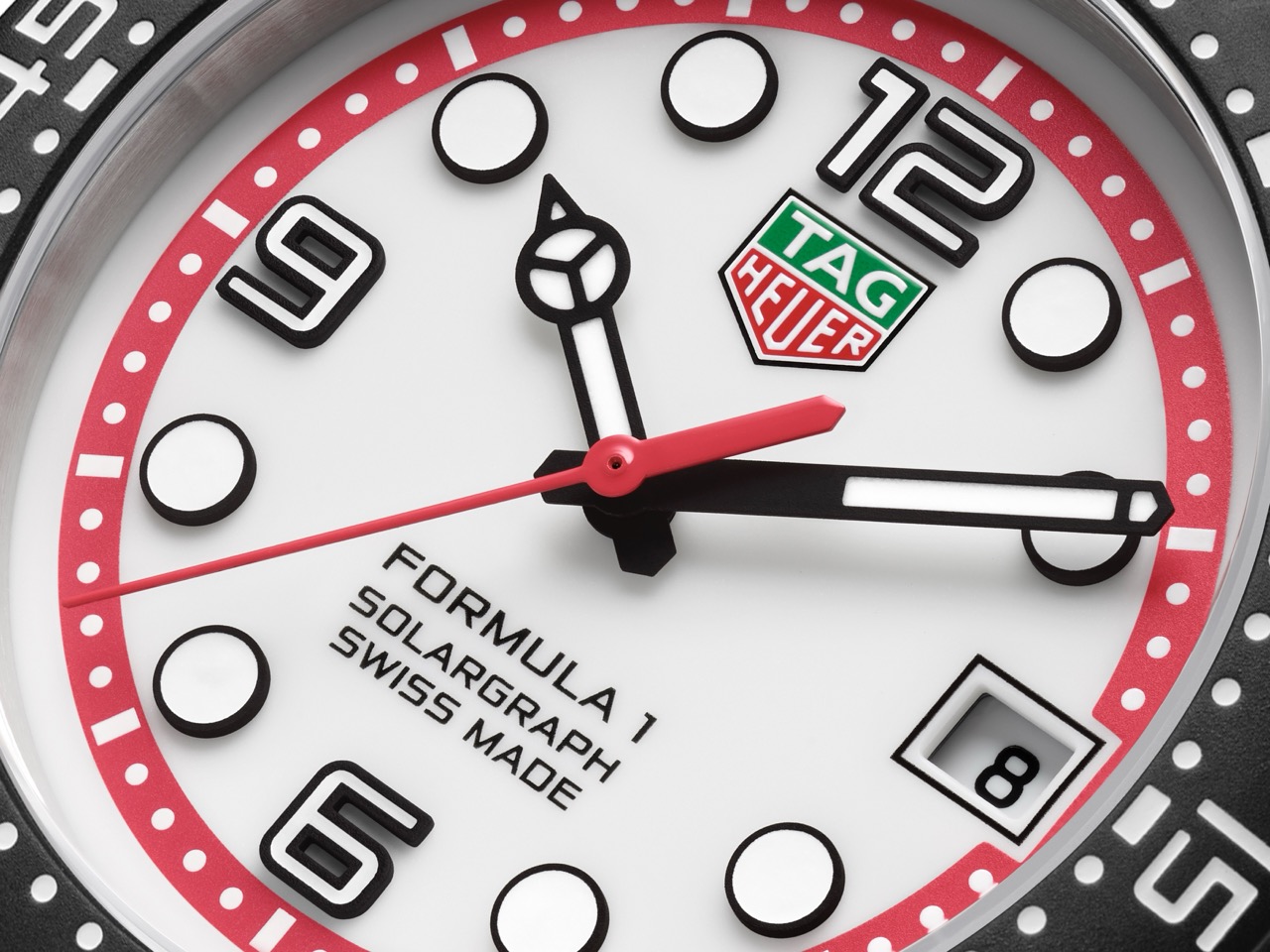
High Octane
In 2025, TAG Heuer fires on all cylinders with a high-octane expansion of its Formula 1 collection, reaffirming its legacy as the watchmaker most closely aligned with motorsports. With nine new references split across bold Formula 1 Chronograph models and refined Solargraph designs, the brand strikes a balance between technical innovation and expressive design. From materials to mechanics, this year’s releases capture the thrill of racing in an array of daring colours.
Formula 1 Chronograph
At the heart of the chronograph range are four new references and a special edition Oracle Red Bull Racing Chronograph, each shaped by the aerodynamic aesthetics of Formula 1 cars. The 43mm cases are sharply contoured, with brake-disc inspired bezels, perforated details, and indexes that echo the silhouettes of Formula 1 car noses.
The cases — crafted from Grade 2 titanium, some with DLC coating — are lightweight yet robust, paired with bold rubber straps and aluminium tachymeter bezels. Crown rings in vivid lacquer and skeletonized rhodium-plated hands underscore a modern, mechanical look. Ergonomics play a starring role. TAG Heuer has shortened the lug-to-lug length, reshaped the profile, and introduced a new quick-adjust bracelet system, offering both tactile satisfaction and all-day comfort.
Colour drives the narrative. Each model is dialled into the energy of night racing, with vivid accents set against black opaline backgrounds. There’s a model with a bold red running track and strap, another in blue with a black-and-blue strap, and one more in lime green, designed to mirror the punchy visuals of modern F1 liveries. The Oracle Red Bull Racing edition features a forged carbon bezel, a checkered flag-patterned dial, and coloured Pantone details mirroring the team’s livery, complete with a two-tone blue and red strap and a caseback engraved with the team and TAG Heuer logos.

Formula 1 Solargraph
Alongside its mechanical chronographs, TAG Heuer debuts nine new 38mm Solargraph references, bringing sustainable innovation to the fast lane. For the first time in the Formula 1 collection, the Solargraph movement takes centre stage, converting sunlight or artificial light into power. Just two minutes of direct sunlight yields a full day of autonomy. Once fully charged (under 40 hours of light), these watches run up to 10 months in darkness. Restart time is nearly instantaneous; just 10 seconds of light exposure gets it ticking again.
Encasing the Solargraph is a blend of sandblasted steel, DLC coatings, and TH-Polylight, a proprietary lightweight polymer engineered for strength, visual clarity, and limitless colour application. The bidirectional bezels have been redesigned for better grip and produce a refined mechanical sound with each rotation, a tactile callback to fine instrument control.
Design nods to the original 1986 Formula 1 models are also present, from shield-shaped Super-LumiNova® indices to vibrant dial colours and racing-inspired rubber straps. Whether in black and yellow, white and green, or classic red and blue, each piece revives the legacy while pushing it forward.
With these new releases, TAG Heuer does not just echo the past. It accelerates into the future. The 2025 Formula 1 collection captures a dynamic intersection of innovation and identity, proving once again that for TAG Heuer, the race never really ends.
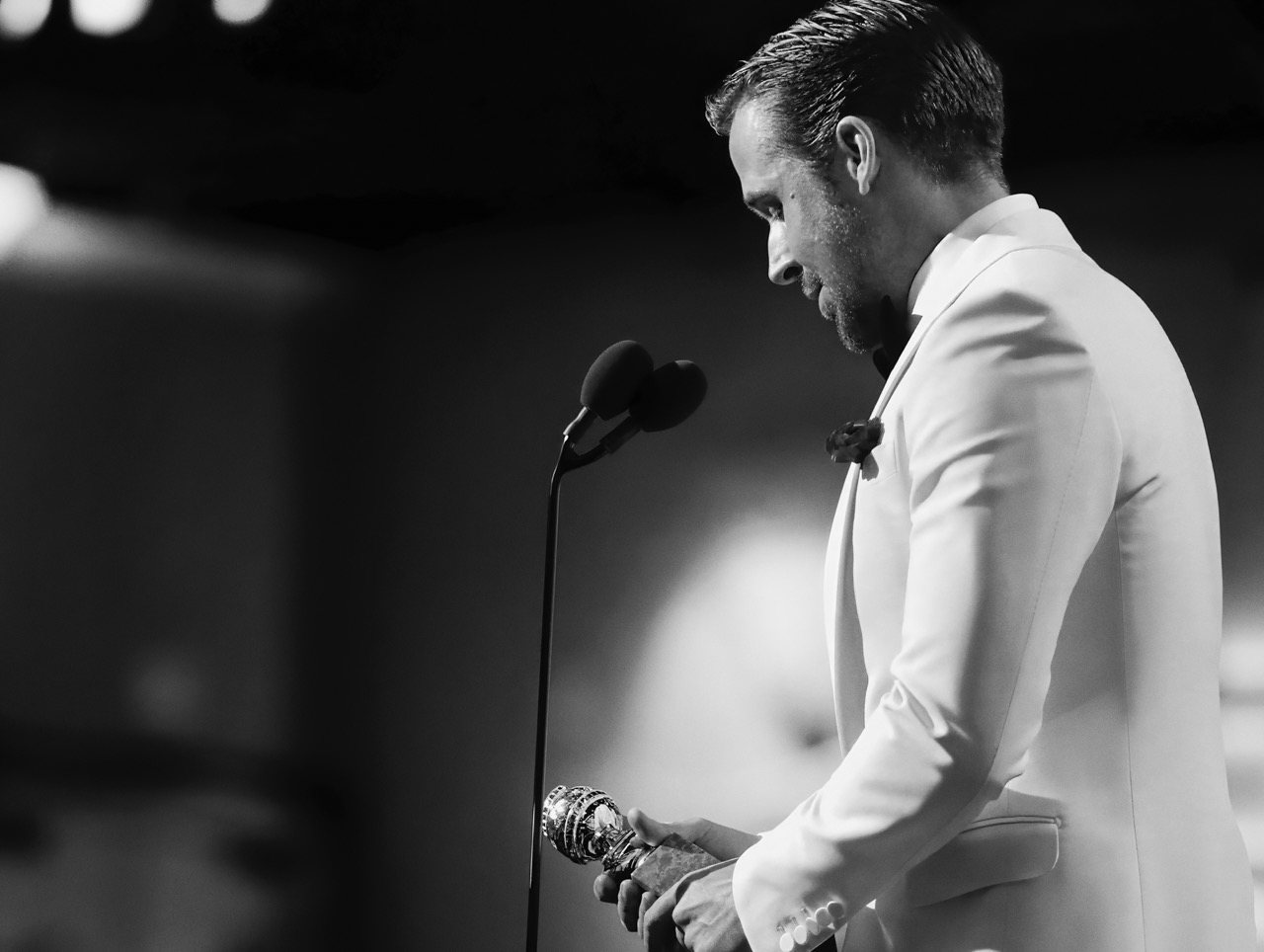
Carrera As Cultue
And yet, it is not quite fair to confine TAG Heuer to the racing pits and podiums. It is important to acknowledge the cultural touchpoint the Carrera and Formula 1 collections have formed for TAG Heuer timepiece of actors, artists, and collectors who appreciate its clarity of form and honesty of function
From the 1980s, TAG Heuer watches appeared on the wrists of stars such as Ayrton Senna, Leonardo DiCaprio and Brad Pitt, and some of us might recall those old advertising visuals with some of the same celebrities. Today, TAG Heuer watches grace Ryan Gosling, who serves as a brand ambassador not just because of star power but because of fit.
More importantly, the TAG Heuer Carrera is today a watch for connoisseurs. With releases such as the 2020 Carrera 160 Years Silver; the 2023 Carrera Chronograph “Glassbox;” and 2024’s Gold Skipper and Cyclops, TAG Heuer has shown it understands what its collectors care about. It is not just nostalgia; it is refinement, balance, and mechanical integrity.
From limited editions such as the Skipper to accessible Day-Dates and peak-performance tourbillons, the Carrera now forms a multi-tiered ecosystem. There is something for the new enthusiast and the seasoned collector alike. The strength of the Carrera line today lies not in a single model, but in its range. And its ability to unify that range under a coherent identity.
“It Is Not Quite Fair To Confine TAG Heuer To The Racing Pits And Podiums; It Is Also A Cultural Touchpoint For Generations”
Where The Road Leads
TAG Heuer has always been a brand of tension: between past and future, elegance and sport, accessibility and ambition. In 2025, that tension finds harmony. The Carrera is no longer just a chronograph. It is a phenomenon. It has survived and thrived through the quartz crises, corporate transitions, and seismic shifts in taste. What has kept it afloat and charging ahead is a consistency of vision.
Jack Heuer’s blueprint from 1963 still governs the Carrera’s design language today. Not in a retro sense, but in principle: focus, legibility, performance. And that’s precisely why it remains relevant.
To look at a Carrera is to glimpse at a story still being written. From Jack’s original 2447 to today’s green tourbillons, this is a collection that has evolved not by abandoning its roots, but by growing into them.
More or less in parallel, the Formula 1 collection has also grown into its roots, which is clear if one merely compares the current Solargraph to the 1986 models. Obviously, this is a quartz story but TAG Heuer has never been shy about innovating in this area too. We could easily bring the Connected models into this but that is still to come so we will not jump the gun here.
Whether it is the Carrera or Formula 1, the watches are at once vintage and current, elemental and technical, familiar and surprising. And in 2025, both the Carrera and the Formula 1 collections feel more aligned with their mission than ever: being tools for clarity, symbols of motion, and designs — undeniably— meant to win.
This story was first seen as part of the WOW #79 Summer 2025 Issue
For more on the latest in luxury watch reads, click here.

